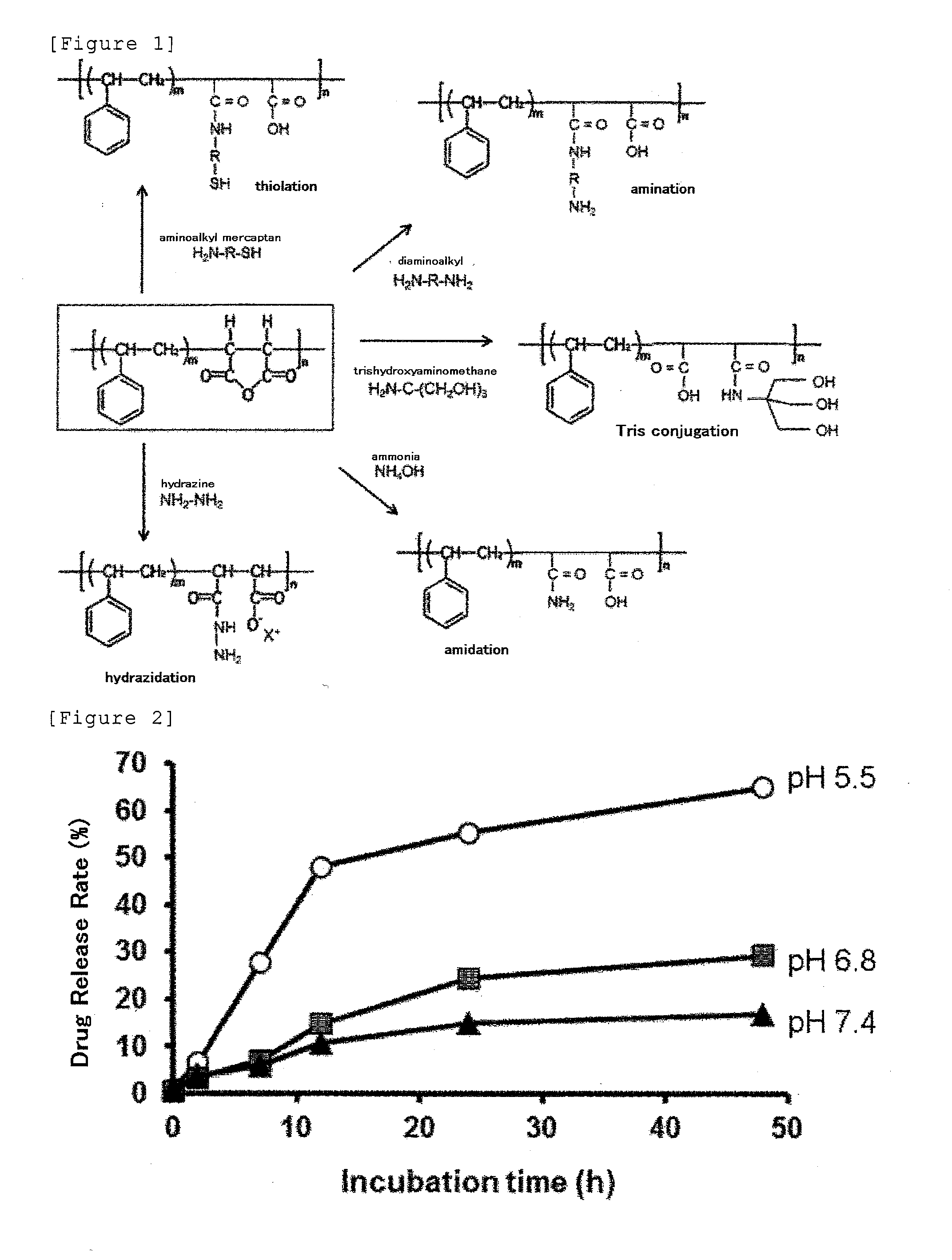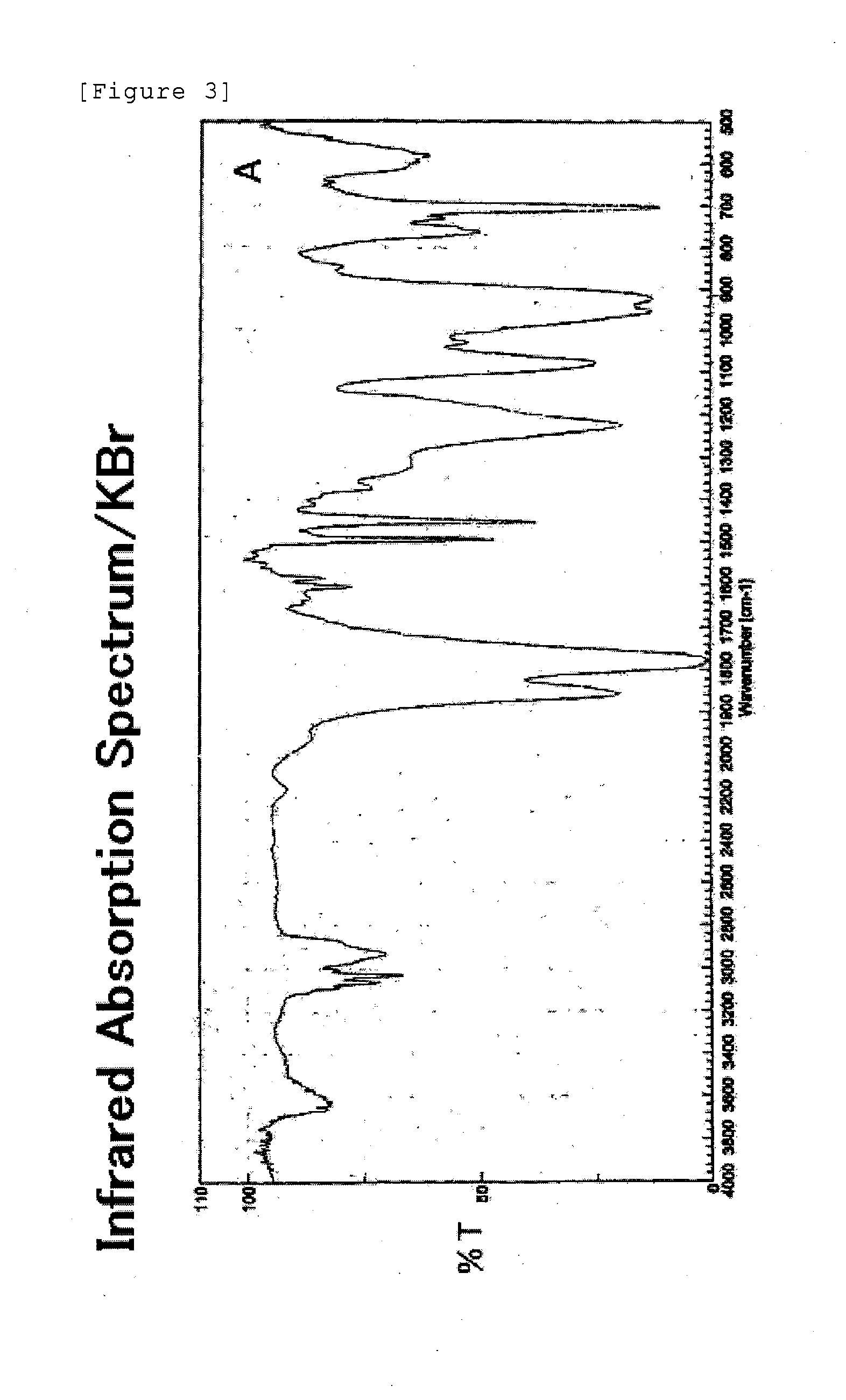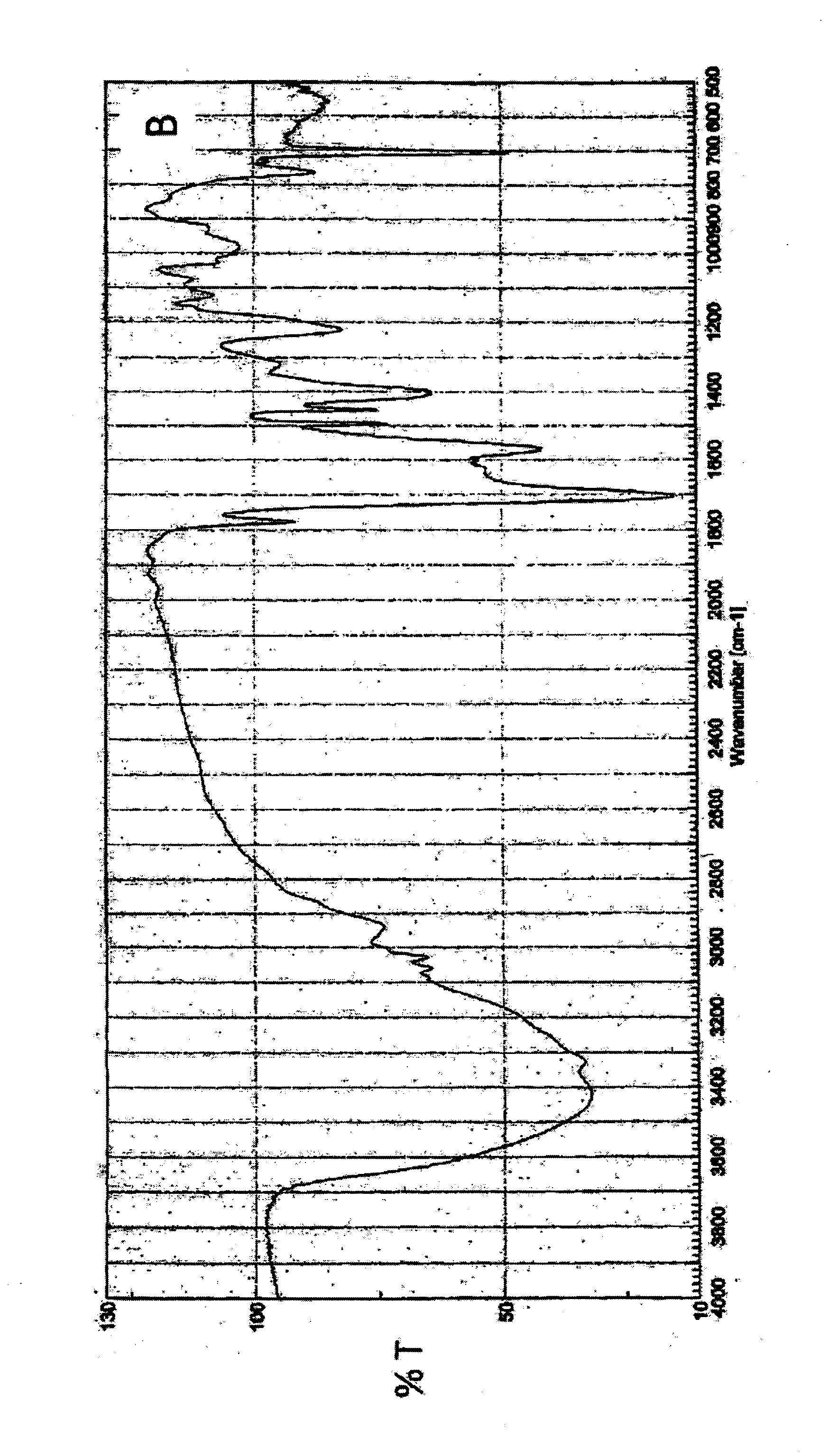Derivative of styrene-maleic acid copolymer
a technology of styrene and styrene, which is applied in the field of styrene-maleic acid copolymer derivatives, can solve the problems of large amount of sma required, difficulty in separation and purification of reaction products, and low yield efficiency of products, so as to reduce negative surface charge and reduce negative charge. , the effect of reducing hydrophicity
- Summary
- Abstract
- Description
- Claims
- Application Information
AI Technical Summary
Benefits of technology
Problems solved by technology
Method used
Image
Examples
example 1
Synthesis of Hydrazinated SMA (SMA / Hydrazine Ratio=1
[0296]To 20 ml of distilled water, 0.13 ml of hydrazine monohydrate (H2N—NH2.H2O; MW=50.06; Wako Pure Chemical Industries, Osaka; 2.6 mmol as NH2—NH2) and then 263 mg of SMA (300 mg as maleic anhydride; manufactured by Sartomer, Exton, Pa., USA; trade name: SMA-Base Resin SMA1000; average molecular weight: 1000 to 1500; 1.3 mmole equivalents as maleic anhydride residues in total) were added, and the mixture was stirred to react at room temperature for 5 to 40 hours, preferably for 24 hours with a magnetic stirrer. The reaction mixture was cloudy immediately after the addition of SMA and became clear after several hours, and the pH was about 9.0. After the reaction for hours, the reaction liquid was filtered through a glass filter. Then 100 ml of distilled water was added and stirred to dilute and dissolve. Subsequently, the filtrate was warmed to to 40° C. in a rotary evaporator, dried under reduced pressure, and concentrated to 1 / ...
example 2
Synthesis of Hyrazidated SMA (SMA / Hydrazine=1 / 2): Reaction of Maleic Anhydride Residues with 2 Mole Equivalents Excess to Hydrazine in Water [Anhydride Ring:Hydrazine=1:2 (Mole Ratio)]
[0297]To 20 ml of water, 127 μl of hydrazine monohydrate (Wako Pure Chemical Industries, Osaka; 2.61 mmol as NH2NH2) was added and mixed. To the mixture was added 300 mg of SMA-maleic anhydride copolymer powders (1.3 mmole equivalents as maleic anhydride) and stirred with a magnetic stirrer for 23 hours at room temperature. Separately, 3 batches of similar reactions were carried out with 300 mg of SMA-maleic anhydride copolymer powders (1.3 mmole equivalents as maleic anhydride) and 127 μl of hydrazine monohydrate (2.61 mmol as NH2NH2). After the reaction for 23 hours, each product was filtered (through a glass filter N05B) and concentrated in a rotary evaporater. Subsequently, 4 batches of the products were combined and then diluted with distilled water, dialyzed through a dialysis membrane with a mol...
examples 3 to 6
Synthesis of Hydrazinated SMA
[0298]A hydrazinated SMA was prepared in a similar reaction to that of Example 2 except that hydrazine was added in an amount of 5 equivalents (Example 3), 20 equivalents (Example 5) and 50 equivalents (Example 6) relative to the maleic anhydride residues. Consequently, SMA derivatives with all the maleic anhydride residues hydrazinated with almost the same elemental analysis values as shown in Table 1 were obtained quantitatively.
PUM
| Property | Measurement | Unit |
|---|---|---|
| pharmaceutical composition | aaaaa | aaaaa |
| amphiphilicity | aaaaa | aaaaa |
| concentration | aaaaa | aaaaa |
Abstract
Description
Claims
Application Information
 Login to View More
Login to View More - R&D
- Intellectual Property
- Life Sciences
- Materials
- Tech Scout
- Unparalleled Data Quality
- Higher Quality Content
- 60% Fewer Hallucinations
Browse by: Latest US Patents, China's latest patents, Technical Efficacy Thesaurus, Application Domain, Technology Topic, Popular Technical Reports.
© 2025 PatSnap. All rights reserved.Legal|Privacy policy|Modern Slavery Act Transparency Statement|Sitemap|About US| Contact US: help@patsnap.com



